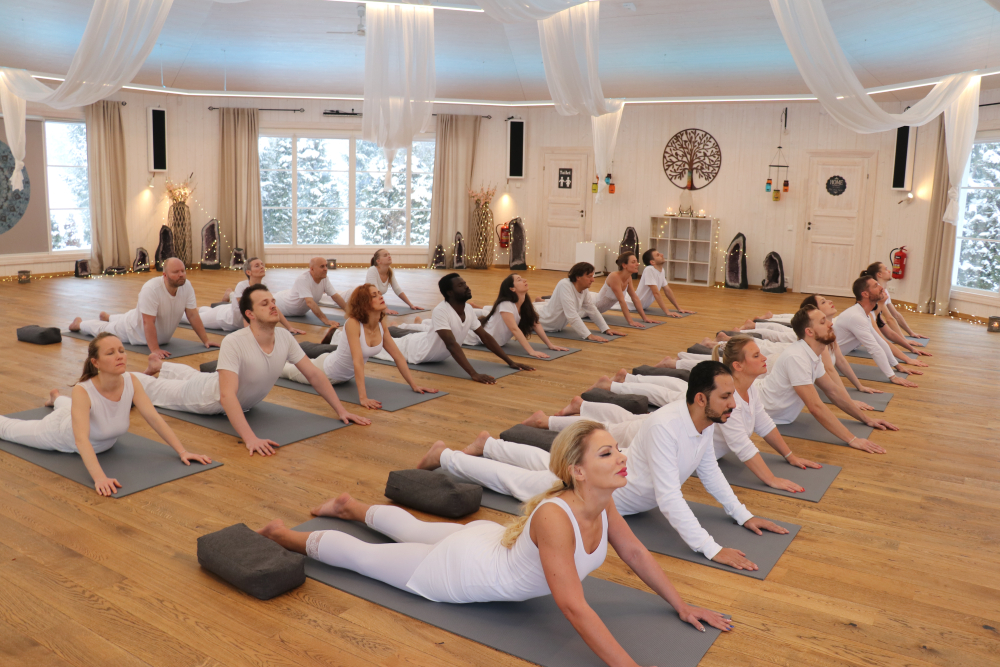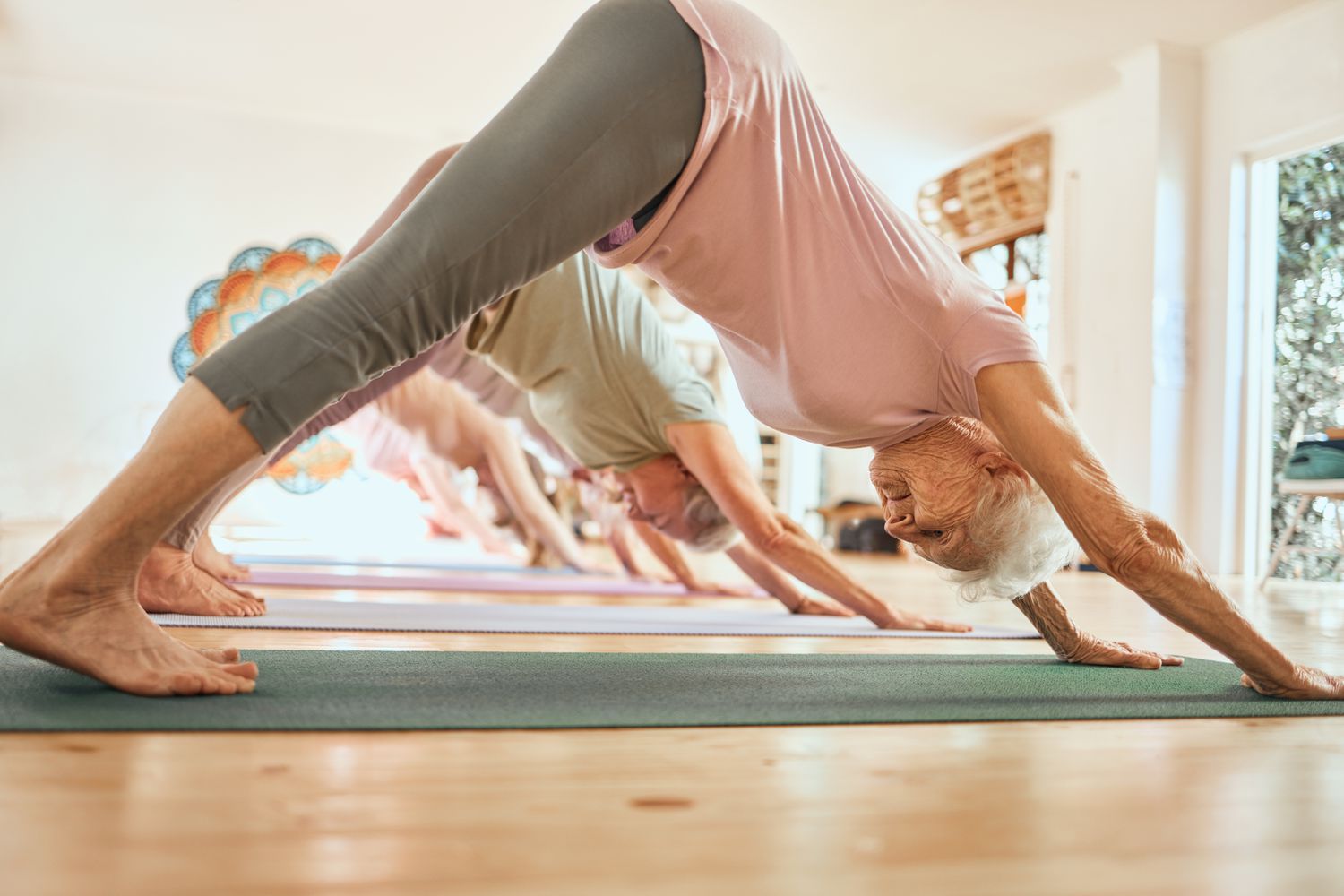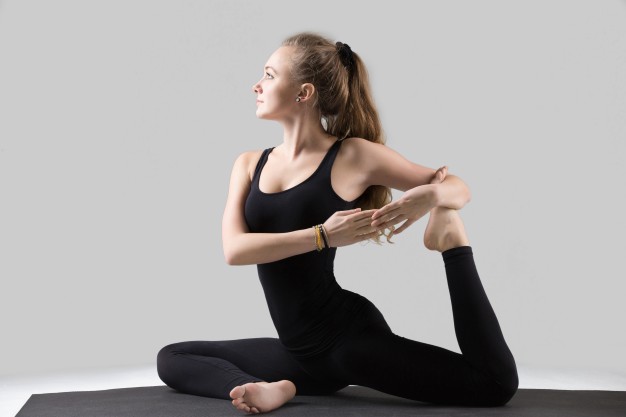Yoga isn’t just about twisting into pretzel-like poses or chanting “om” in a candlelit room—it’s a way of life that’s been around for thousands of years, blending physical movement, mental clarity, and spiritual connection. I remember my first yoga class: I walked in expecting a glorified stretching session, only to leave feeling like I’d unlocked a secret door to inner calm and physical strength. Whether you’re a stressed-out professional, a parent juggling a million tasks, or just someone curious about feeling better, yoga has something to offer. In this article, we’ll dive into why yoga matters, its incredible benefits for your mind and body, and how you can make it part of your life.
Why Yoga Matters Today
In our fast-paced, screen-obsessed world, yoga is like a reset button for both body and soul. It’s a practice rooted in ancient Indian philosophy, designed to harmonize physical health, mental focus, and emotional balance. With stress levels soaring and burnout becoming a badge of honor, yoga offers a practical way to slow down, reconnect, and thrive.
The Science Behind Yoga’s Importance
Studies, like those from Harvard Medical School, show yoga reduces cortisol (the stress hormone), improves heart health, and boosts mood. It’s not just woo-woo spirituality—yoga’s benefits are backed by hard data. From lowering blood pressure to enhancing brain function, it’s a holistic powerhouse.
Physical Benefits of Yoga
Yoga’s physical perks are undeniable, whether you’re a beginner wobbling through your first downward dog or an advanced yogi mastering handstands. It’s not about being the most flexible person in the room—it’s about moving your body in ways that feel good and build strength over time.
Improved Flexibility and Mobility
Yoga gently stretches muscles and connective tissues, increasing range of motion. A 2016 study in the Journal of Physical Therapy Science found that just eight weeks of yoga improved flexibility by up to 35%. Whether you’re reaching for a high shelf or tying your shoes, better mobility makes life easier.
Strength and Muscle Tone
Poses like plank, warrior, and chair engage multiple muscle groups, building strength without the need for heavy weights. I once met a 60-year-old yogi who could hold a plank longer than most gym buffs—proof that yoga builds real, functional strength.
Better Posture and Alignment
Hours hunched over laptops wreak havoc on our spines. Yoga poses like mountain and cat-cow correct alignment, reducing back pain. After a month of daily yoga, I noticed my slouch disappear, and my chiropractor visits dropped significantly.
Enhanced Cardiovascular Health
Certain yoga styles, like Vinyasa or Ashtanga, get your heart pumping. A 2013 study in the American Journal of Preventive Medicine showed yoga can lower blood pressure and cholesterol, reducing heart disease risk. It’s like cardio, but calmer.
Pain Relief and Injury Prevention
Yoga’s low-impact nature makes it ideal for easing chronic pain, especially in the lower back or joints. Research from the Annals of Internal Medicine found yoga as effective as physical therapy for back pain relief. It’s a gentle way to stay active without risking injury.
| Physical Benefit | How Yoga Helps | Example Poses |
|---|---|---|
| Flexibility | Stretches muscles and joints, improving range of motion | Downward Dog, Forward Fold |
| Strength | Engages core, arms, and legs for functional strength | Plank, Warrior II |
| Posture | Aligns spine and strengthens back muscles | Mountain Pose, Cat-Cow |
| Heart Health | Increases heart rate in dynamic flows, lowers blood pressure | Sun Salutations, Vinyasa Flow |
| Pain Relief | Reduces tension in muscles and joints, eases chronic pain | Child’s Pose, Bridge Pose |
Mental and Emotional Benefits of Yoga
Yoga’s magic isn’t just physical—it’s a mental game-changer. In a world that feels like it’s always screaming for your attention, yoga teaches you to pause, breathe, and find peace.
Stress Reduction and Relaxation
Yoga activates the parasympathetic nervous system, calming the body’s fight-or-flight response. A 2018 study in Frontiers in Immunology found yoga lowers stress hormones, helping you feel more relaxed. After a tough day, a 20-minute yoga session feels like a mini-vacation.
Improved Focus and Mental Clarity
Practicing mindfulness through yoga sharpens concentration. I used to struggle with brain fog during long workdays, but adding a morning yoga routine helped me stay laser-focused. Poses paired with breathwork train your brain to stay present.
Emotional Resilience and Mood Boost
Yoga increases serotonin and GABA levels, neurotransmitters linked to happiness and calm. A 2017 meta-analysis in The Journal of Clinical Psychiatry found yoga reduces depression symptoms. It’s like therapy, but with better leggings.
Better Sleep Quality
Struggling to catch Z’s? Yoga can help. A 2015 study in Alternative Therapies in Health and Medicine showed yoga improves sleep quality, especially for insomniacs. Gentle poses like legs-up-the-wall before bed work wonders.
Building Self-Confidence
Mastering a new pose or holding a balance longer than last week feels empowering. Yoga taught me to trust my body’s abilities, boosting my confidence both on and off the mat.
| Mental Benefit | How Yoga Helps | Example Practices |
|---|---|---|
| Stress Reduction | Lowers cortisol, promotes relaxation | Restorative Yoga, Deep Breathing |
| Focus and Clarity | Enhances mindfulness, improves cognitive function | Balancing Poses, Meditation |
| Mood Improvement | Boosts serotonin, reduces depression symptoms | Sun Salutations, Heart Openers |
| Better Sleep | Calms nervous system, improves sleep quality | Legs-Up-the-Wall, Savasana |
| Confidence | Builds self-esteem through mastery of poses | Warrior Poses, Inversions |
Yoga vs. Other Forms of Exercise: A Comparison
Wondering how yoga stacks up against running, weightlifting, or HIIT? Let’s break it down.
Yoga vs. Running
Running is fantastic for cardio but can be tough on joints. Yoga offers low-impact heart health benefits while improving flexibility and mental calm. Runners often use yoga to recover and prevent injuries.
Yoga vs. Weightlifting
Weightlifting builds muscle fast but often neglects flexibility and mindfulness. Yoga strengthens muscles more slowly but enhances mobility and reduces stress, making it a great complement to gym workouts.
Yoga vs. HIIT
HIIT is intense and time-efficient but can leave you burnt out. Yoga’s slower pace promotes recovery and mental balance, perfect for balancing high-energy workouts.
| Exercise Type | Strengths | Weaknesses | Best For |
|---|---|---|---|
| Yoga | Flexibility, mindfulness, low-impact | Slower strength gains | Stress relief, mobility, balance |
| Running | Cardio, stamina | High impact, less mental focus | Endurance, weight loss |
| Weightlifting | Muscle growth, strength | Limited flexibility, repetitive | Building muscle mass |
| HIIT | Quick, intense, calorie-burning | Risk of burnout, less mindfulness | Time-crunched fitness enthusiasts |
Pros and Cons of Yoga
Pros
- Accessible: Suitable for all ages and fitness levels.
- Holistic: Benefits body, mind, and spirit.
- Low-Cost: Minimal equipment needed—just a mat or even a towel.
- Versatile: From gentle restorative to sweaty power yoga, there’s a style for everyone.
- Portable: Practice anywhere—home, park, or beach.
Cons
- Time Commitment: Some classes or routines can be lengthy.
- Learning Curve: Beginners may feel intimidated by complex poses.
- Not a Quick Fix: Results take consistency and patience.
Where to Start with Yoga
Ready to roll out a mat? You don’t need fancy gear or a studio membership to begin. Here’s how to dive in.
Finding Classes or Resources
- Online Platforms: Websites like Yoga With Adriene (yogawithadriene.com) offer free, beginner-friendly videos.
- Local Studios: Search “yoga classes near me” on Google Maps for in-person options.
- Apps: Try apps like Down Dog or Glo for guided sessions on your phone.
Best Tools for Yoga
- Yoga Mat: A non-slip mat (like Manduka or Liforme) ensures safety and comfort.
- Props: Blocks, straps, and bolsters help modify poses for beginners.
- Clothing: Opt for breathable, stretchy attire like leggings and a fitted top.
Tips for Beginners
- Start with short sessions (10–20 minutes) to build confidence.
- Focus on breathwork—it’s the heart of yoga.
- Don’t compare yourself to others; progress is personal.
People Also Ask (PAA) Section
What is yoga, and why is it important?
Yoga is a practice combining physical poses, breathing techniques, and meditation to promote health and well-being. It’s important because it reduces stress, improves physical fitness, and fosters mental clarity, backed by decades of research.
How does yoga benefit the mind?
Yoga calms the nervous system, reduces anxiety, and boosts mood through mindfulness and breathwork. Studies show it can lower depression symptoms and improve focus, making it a powerful mental health tool.
Can yoga help with weight loss?
While not as calorie-intensive as HIIT, yoga supports weight loss by reducing stress (which can curb emotional eating) and building muscle. Dynamic styles like Vinyasa burn more calories.
Is yoga suitable for beginners?
Absolutely! Beginner-friendly styles like Hatha or Restorative yoga are gentle and adaptable. Start with short, guided sessions to ease into the practice.
FAQ Section
How often should I practice yoga to see benefits?
Aim for 2–3 sessions per week, even if just 15–20 minutes. Consistency matters more than duration. Over time, you’ll notice improved flexibility, strength, and mental calm.
Do I need to be flexible to do yoga?
Not at all! Yoga is for every body type and flexibility level. Poses can be modified with props, and flexibility improves with practice.
Can yoga replace other workouts?
Yoga can be a standalone practice but shines as a complement to cardio or strength training. It enhances recovery, flexibility, and mental focus.
What’s the best time to do yoga?
Morning yoga energizes you for the day, while evening sessions promote relaxation and better sleep. Choose what fits your schedule and energy levels.
Is yoga safe for everyone?
Most people can practice yoga safely, but consult a doctor if you have injuries or chronic conditions. Always listen to your body and avoid pushing past discomfort.
Making Yoga Part of Your Life
I’ll never forget the first time I finished a yoga session feeling lighter, like I’d shed a layer of stress I didn’t even know I was carrying. That’s the beauty of yoga—it meets you where you are. Whether you’re chasing physical strength, mental peace, or a little bit of both, yoga delivers. Start small, maybe with a 10-minute YouTube video or a local class. Invest in a good mat, wear comfy clothes, and let your breath guide you. The mat is a judgment-free zone, and every pose is a step toward a healthier, happier you.
For more resources, check out trusted sites like Yoga Journal or try a beginner class at a local studio. Your mind and body will thank you.




